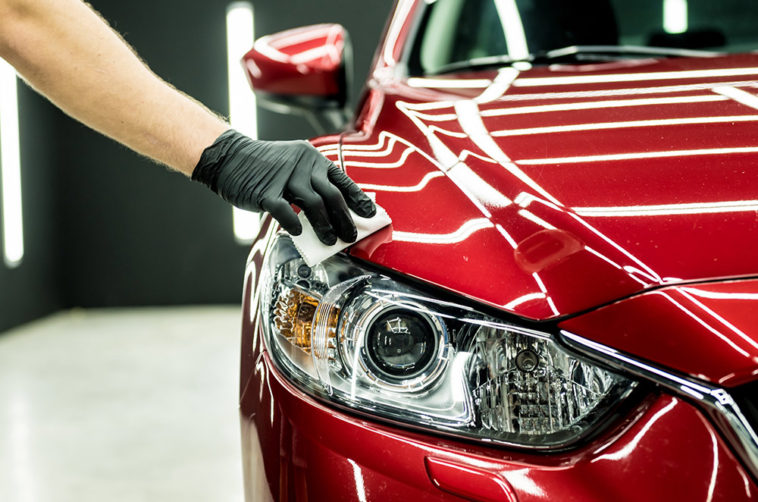Now, the one million dollar question is, whether vehicle detailing is anything more than a vanity project?
That’s perhaps what it looks like. I mean, what is the purpose of detailing? To have your vehicle restored to look perfect again, to bring it back to that legendary ‘fresh-from-the-showroom’ look.
There is no doubt that for many car owners, detailing is just about the image. They will gladly pay a professional detailer or spend the time to do it themselves at home to keep their car looking its showroom best. Pride in what you own is not a crime.
However, what is detailing other than that? Maybe not a question for a million dollars, but one that could have a couple of thousand quid bet on it. Detailing is about not only what your vehicle looks like. It is also about the preservation of this value. Whoopals, one can also say that it guards your health.
Protecting your vehicle’s bodywork

Car detailing is not only a complete washing of your vehicle. It is also all about dealing with the physical symptoms of damage, mostly on the paintwork. Debris in any form can chip or embed into the paint, as well as acids in substances like sap, bird droppings, rain, and UV light. A harder fabric will still leave marks just from careless washing.
Polishing is the process of doing away with such damage. The process of polishing makes use of abrasive materials, which directly alter and smooth out defects in the paintwork. If done with caution, this can change the appearance of your bodywork into something fresh and new.
By polishing the marks and the defects when they are small, you are actually stopping them to grow and deepen. Scratches quickly get filled with debris and other impurities, which can be harmful to your paintwork worsening them. When they penetrate too deep, no longer can they be polished. They produce permanent and ugly scars that necessitate the far more challenging (and possibly costly) process of in filling and retouching to correct.
In addition, detailing requires applying coatings to your paint to prevent any more physical and chemical abuse for some time. Wax is among the products that are popular in finishing a car’s paintwork with a protective layer.
Another option is to apply ceramic-based sealants. Sealers leave a polymer coat on the surface of your car that prevents the paintwork from chemical contaminants and the sun’s UV rays. While wax does not protect the car from long sun exposure, it adds more shine, but sealants provide a greater protective effect that can be long-lasting.
Protecting your vehicle’s value

Physical condition is one of the major factors that determine the amount a car can be sold or traded in for. Of course, not that much as miles on the dial. However, nobody will give a good price for a car that appears neglected and unloved, despite the fact that it still performs like it is new.
Detailing is thus a form of preserving your investment in your vehicle. A minimal amount of time and/or cash once every 12 months or so is required which should be used for cleaning and inspecting the caravan thoroughly so little defects will not turn into defects. It will remain in a good enough condition to where you can have your vehicle looking like new when the time comes to switch it.
In such a way, detailing can be approached in the same way in which you approach servicing and MOTs for your car. Alright, the law does not demand it, and there is no safety element to it. Although this is also a form of wearing prevention – taking care of the physical condition of a car in a regular manner to minimize the decay in the long run.
Protecting your health

The third argument in favor of the fact that detailing is not just a matter of vanity concerns the inside of your automobile. A lot of attention is paid to the exterior of your car, mainly detailing the bodywork. However, a complete detail, especially when you pay to have it done professionally, should also include a thorough clean of the inside of your vehicle.
Just like the bodywork, this will serve to reduce the overall general wear and tear over time. But it also enhances cleanliness. There is an affliction known as sick car syndrome and it’s not to be mistaken for car sickness or motion sickness. Carsick syndrome is linked with mites in cars. When you think about it, the inside of a car is the perfect environment for microbes – a warm, moist, relatively confined space.
Typical symptoms of sick car syndrome are not being physically ill or nauseous but hayfever-like allergic reactions – runny nose, itchy throat, sore eyes, tight chest, sneezing, etc. The most likely culprits include colonies of mold releasing spores from dark, humid places or dust mites thriving in the seats. The air conditioning and fans help to spread these throughout the car.
Thus, if you have noticed that when driving, you are often possessed by fits of sneezing and itchy eyes, then your car interior is probably dirty. It’s not about vanity it’s about being able to enjoy driving without having any pain.


